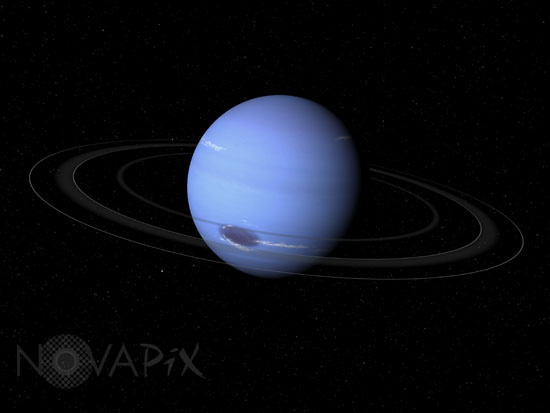Photo Agency - Astronomy - Space - Nature

Neptune - Illustration
author: Walter B. Myers/Novapix
reference: a-nep99-00026
Image Size 300 DPI: 33 * 25 cm
This image suggests how Neptune might look from a position in space above the plane of its rings.
Like Uranus, Neptune is a Gas Giant, composed primarily of hydrogen and helium gases surrounding a relatively small, dense core of molten rock and metal. Also like Uranus, Neptune has charcoal-colored rings, although they appear to be fewer in number than Uranus's. While Neptune's diameter is slightly less than Uranus', it has more mass. Neptune's blue color is due to the presence of methane in its upper atmosphere. The dark spot in the southern hemisphere beneath the rings, dubbed "The Great Dark Spot," is believed to be a giant storm which was active in 1989 when Voyager 2 photographed Neptune.
Just beyond the rings at Neptune's 7 o'clock position, barely discernable from the background stars, is the tiny satellite Proteus. With an average diameter of 260 miles, Proteus is the second-largest of Neptune's eight known satellites (a distant second compared to Neptune's largest satellite Triton which has a diameter of 1,677 miles).
Keywords for this photo:
ASTRONOMY - CLOUD - GREAT DARK SPOT - ILLUSTRATION - NEPTUNE - NEPTUNE'S MOON - PLANET - PROTEUS - RING - STORM -
Contact : Stéphane Aubin +33-(0)9-51-26-53-76
© Novapix - All rights reserved


